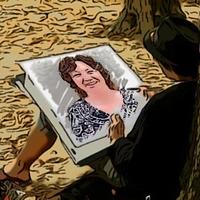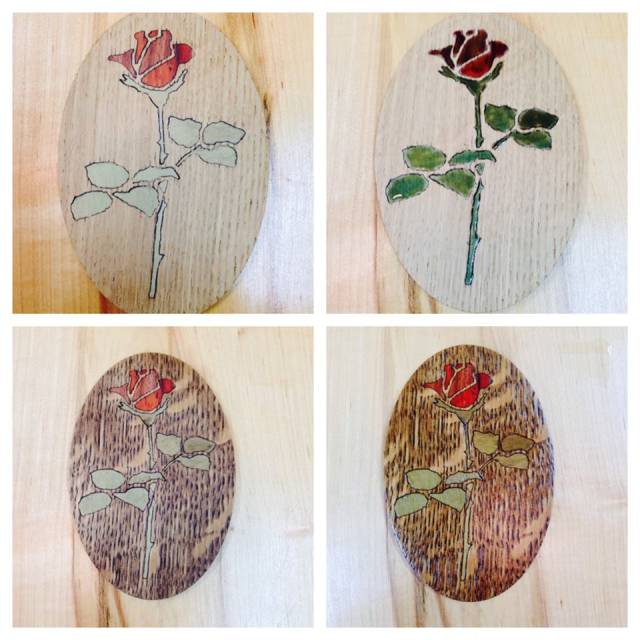
Terry
in over 11 years
Testing... Stain and Inlay
I’m still trying to figure out if I’m entering things in the right places (ie; blog, forum or comment) so please be patient with me – I will get it… (I posted this under comments for Inlay also…if someone wants to remove that…)
We have long had a discussion with one of our friends (that does finishing and restoration finishes for a living) on ‘How to do an inlay and then stain the wood without staining the inlay’. He told me it would be nearly impossible unless I found a way to mask off only the inlay areas really well so there would be no bleed from the stain. It would be very difficult at best because with inlay there is a lot of sanding involved and you don’t want to sand the finish off the board…
I took this on as a challenge – I love challenges! For me, it’s finding out what works or doesn’t – learning a new skill or quit wasting my time!
This was my experiment:
Top left is quarter-sawn Oak with a rose inlay, top right I hand painted a water based liquid mask over the unfinished inlay. Bottom left we stained the Oak with a walnut stain (which was too dark for my liking, but great for my sample). Now I had to get the masking stuff off my bare wood which was a task all on it’s own. I used a damp scrubby sided sponge to get it all off. Once it dried, I lightly sanded and sprayed the sample with a clear enamel. Finished sample is the bottom right. It worked, though I do not think I would try this on a large project – but great for a small one.

3 Comments
Very interesting process .
Thinking about I would stain the board first then do the inlay and follow with the clear finish .
Does that sound feasible or out to lunch ?
Klaus
What got me thinking on this was Steve and I designed and made our bed – it is a craftsman style (sort of) and I had already done all the inlay work for it. Our finisher friend told me I couldn’t have the darker stain I wanted because it would make my inlays too dark and get lost. If I had stained the bed first, then I have the problem with sanding the inlays and removing or scuffing the stained finish. We had our friend finish the bed for us with a tinted lacquer – he’s set up for that kind of work (we just didn’t have the room or equipment). The only other possibility we can explore is maybe doing the inlay and hand paint the sealer over the inlay and then stain – will be trying that next!

Very interesting Keep us posted on what’s next.
-- Paul--- Creativity is allowing yourself to make mistakes. Art is knowing which ones to keep. — Scott Adams









